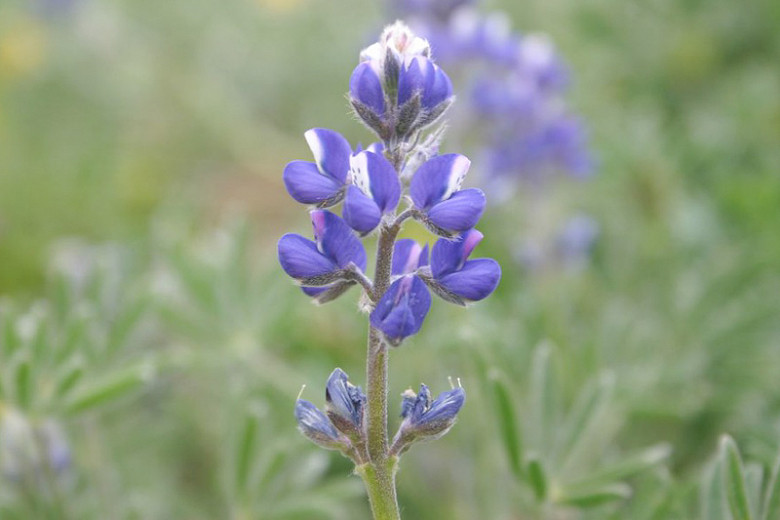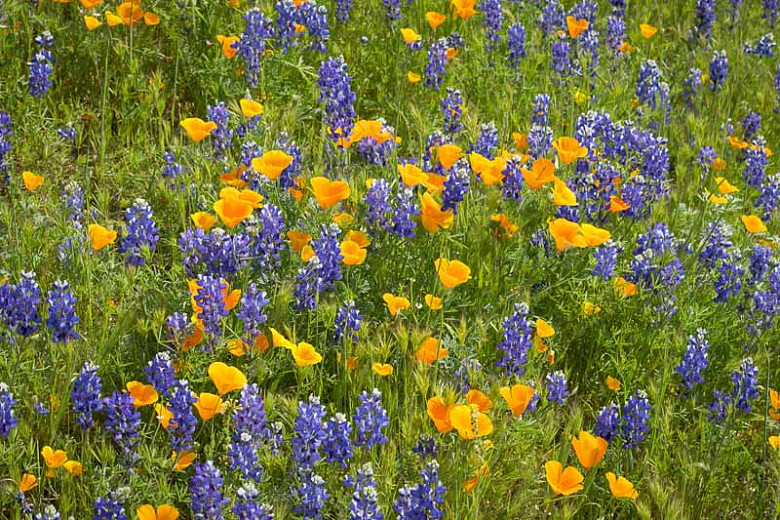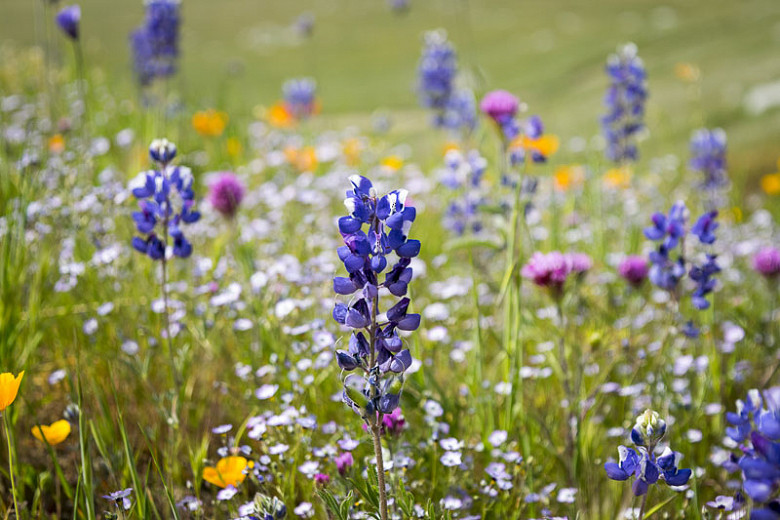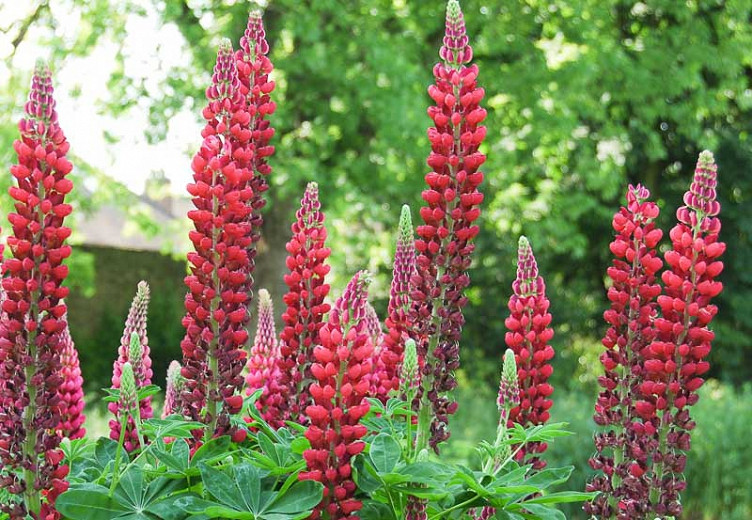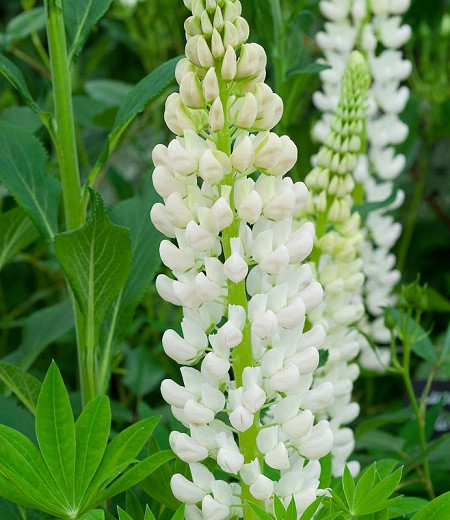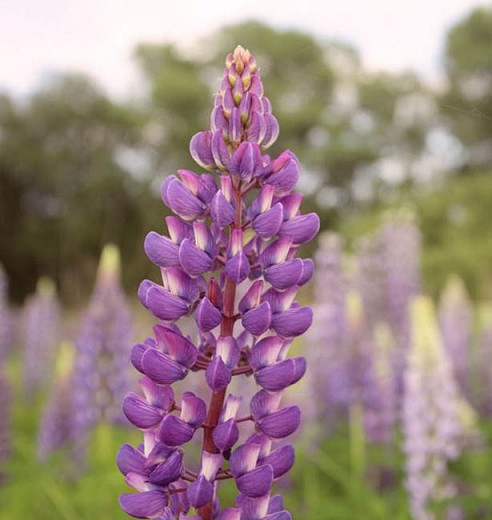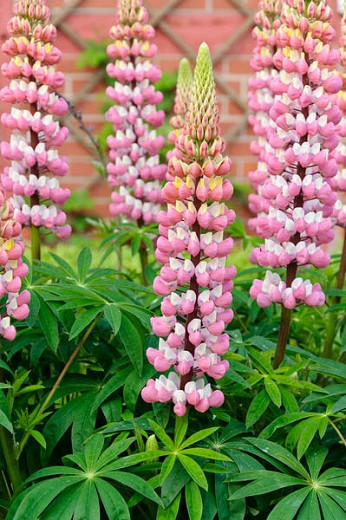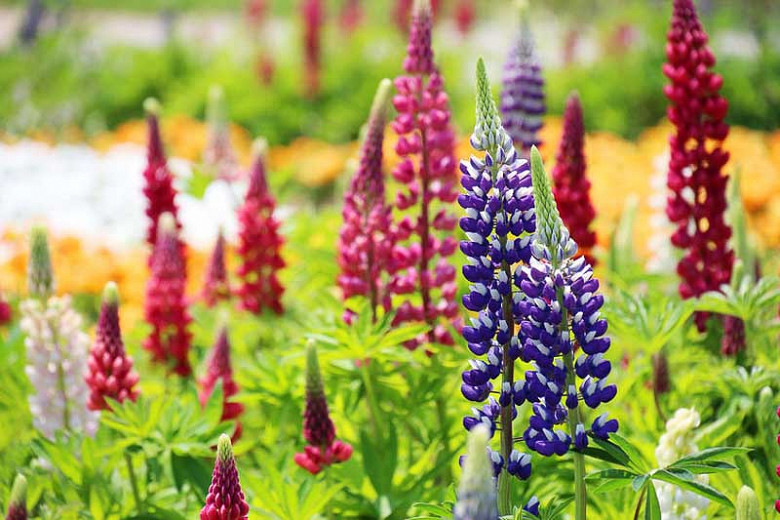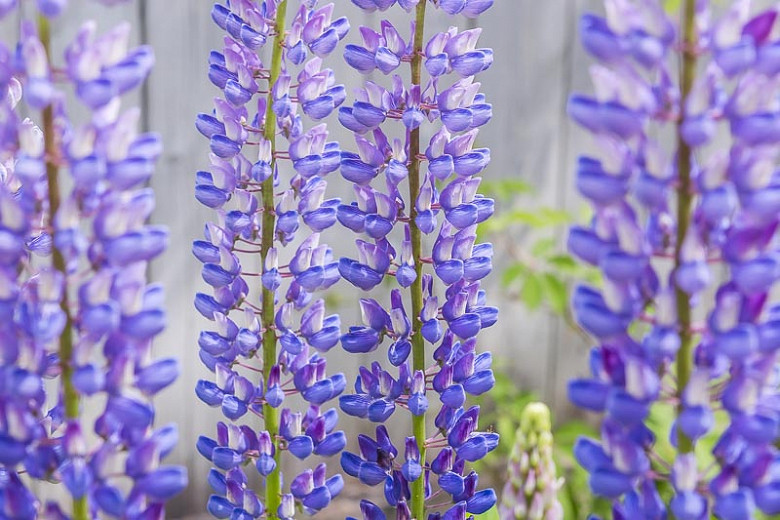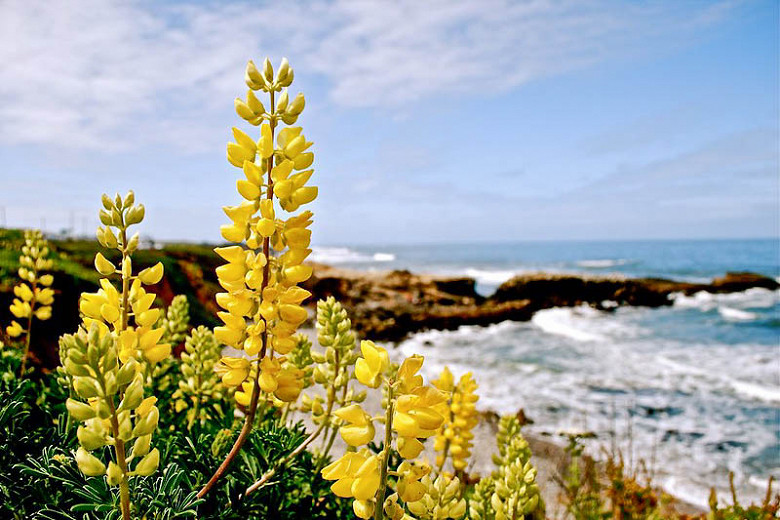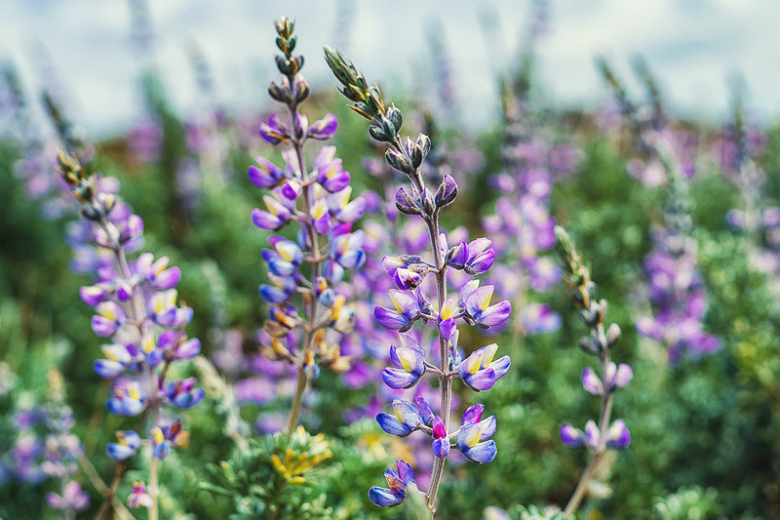Lupinus bicolor (Miniature Lupine)
Lupinus bicolor (Miniature Lupine) is a small annual or perennial wildflower boasting elongated spikes of blue-violet and white pea-shaped flowers from early spring to early summer. The blossoms are borne on short, hairy stems above the foliage of small, palmately compound leaves. Attractive to bumblebees, native bees, hummingbirds, and butterflies, the flowers are followed by small hairy pods which contain tiny brown seeds. When the pod has dried out and it is ready, the seeds are released by the pod erupting and expelling the seeds up to 20 feet (6 m). This reproductive cycle leads to the rise of large colonies. Miniature Lupine is nitrogen-fixing and valuable for the rehabilitation of disturbed sites because it grows well on droughty and low-fertility sites, colonizes disturbed areas, and forms associations with nitrogen-fixing bacteria. Miniature Lupine is frequently found with the California Poppy (Eschscholzia californica), creating striking combinations in the landscape. Both plants have similar growing methods and live simultaneously without any problems.
- Grows up to 4-16 in. tall (10-40 cm) and 12 in. wide (30 cm).
- Thrives in full sun in dry, sandy, well-drained soils. Tolerates a variety of soils. Miniature Lupine can persist in low-fertility soils because of its ability to fix nitrogen. Relatively high tolerance to heat and drought.
- An excellent choice for informal gardens, prairies and meadows, or wildlife gardens.
- No serious pest or disease issues.
- Propagate by seed. Fresh seeds do not require pretreatment. Stored seeds may benefit from scarification or hot water.
- All parts, particularly the seeds, may cause severe discomfort if ingested. Toxic only if eaten in large quantities. Wear gloves and wash your hands after handling.
- Toxic to dogs, toxic to cats, toxic to horses, toxic to humans.
- Native to western North America from California to British Columbia.
Requirements
| Hardiness | 8 – 9 |
|---|---|
| Climate Zones | 7, 8, 9, 10, 11, 12, 14, 15, 16, 17, 18, 19, 20, 21, 22, 23, 24 |
| Plant Type | Annuals, Perennials |
| Plant Family | Lupinus – Lupines |
| Exposure | Full Sun |
| Season of Interest | Spring (Early,Mid,Late)Summer (Early) |
| Height | 4" – 2' (10cm – 60cm) |
| Spread | 10" – 1' (25cm – 30cm) |
| Spacing | 12″ (30cm) |
| Water Needs | Low |
| Maintenance | Low |
| Soil Type | Clay, Loam, Sand |
| Soil pH | Acid, Alkaline, Neutral |
| Soil Drainage | Well-Drained |
| Characteristics | Showy |
| Native Plants | United States, California, Pacific Northwest, Oregon, Washington, Southwest, Arizona |
| Tolerance | Drought |
| Attracts | Bees, Birds, Butterflies, Hummingbirds |
| Garden Styles | Informal and Cottage, Prairie and Meadow |
